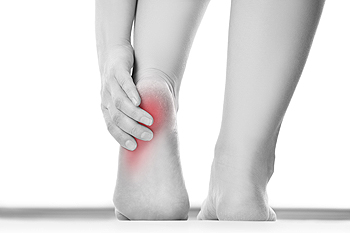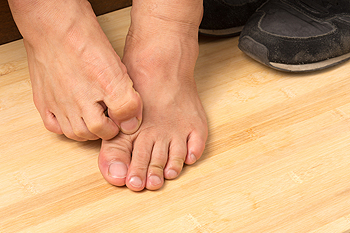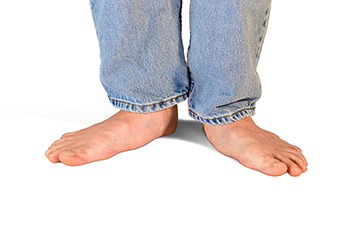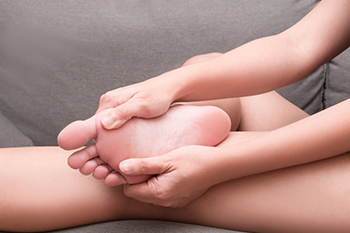Blog
How Extra Body Weight Affects Foot and Ankle Health
There are many reasons for trying to lose weight. You may want to lower your cholesterol, bring down your blood pressure, increase your energy, or just feel more comfortable in your clothes. You can also add improving your foot and ankle health to the list. Being heavy can place a tremendous amount of strain on your feet and ankles, making you more likely to suffer from heel pain. Carrying excessive weight on your body can set the stage for conditions such as plantar fasciitis, heel spurs, hammertoes, bunions, flat feet, and more. You are also at an increased risk of developing systemic diseases that affect foot and ankle health such as diabetes and gout. While you are working hard to take that extra weight off, it is suggested that you consult with a podiatrist who has various methods of easing pain, while reducing pressure and distributing weight more evenly on your feet.
The more you weigh, the harder your feet must work to support your body. If you’re an obese individual and are concerned about your feet, contact Dr. Kendall Blackwell from InStride Wilson Podiatry Associates. Our doctor can provide the care you need to keep you pain-free and on your feet.
Obesity and Your Feet
People who are overweight are putting more pressure on their ankles, knees, and hips as well as their feet. This unfortunately can lead to variety of different issues.
Problems & Complications Stemming from Obesity
- When the body is overweight, it tries to compensate by changing the way that it moves. An obese person may lean forward and put extra weight on the wrong part of the foot. This puts unnecessary stress on the feet.
- Obese people are also more likely to develop type II diabetes which is a condition that causes a lot of foot problems. People with diabetes often don’t feel the cuts and sores that they may have on their feet, which can lead to more complicated and severe issues.
- Plantar fasciitis is another foot condition that can be caused by obesity. Plantar fasciitis is an inflammation of the tissue along the bottom of the foot, which causes pain and stiffness while walking and climbing stairs.
If you have any questions, please feel free to contact our office located in Wilson, NC . We offer the newest diagnostic and treatment technologies for all your foot care needs.
Heel Pain Fast Facts
Heel pain is extremely common and is typically caused by small, repetitive injuries to the heel over time. Most heel pain is localized under and in front of the heel, although pain can also affect the back of the heel and can sometimes radiate to, or from, the arch of the foot or the ankle. Heel pain typically starts gradually and may worsen over time when left untreated. Potential causes of heel pain can include plantar fasciitis, heel bursitis, heel spurs, tarsal tunnel syndrome, heel pad inflammation, Sever’s disease, stress fractures, and Achilles tendonitis. Fortunately, conservative treatment methods such as resting, icing, compressing, and elevating the affected foot, as well as wearing supportive shoes and taking over-the-counter pain medications can help with pain and swelling, but may not be a permanent solution. If you are experiencing any type of heel pain, it is strongly suggested that you consult with a podiatrist to receive a proper diagnosis with a corresponding treatment plan.
Many people suffer from bouts of heel pain. For more information, contact Dr. Kendall Blackwell of InStride Wilson Podiatry Associates. Our doctor can provide the care you need to keep you pain-free and on your feet.
Causes of Heel Pain
Heel pain is often associated with plantar fasciitis. The plantar fascia is a band of tissues that extends along the bottom of the foot. A rip or tear in this ligament can cause inflammation of the tissue.
Achilles tendonitis is another cause of heel pain. Inflammation of the Achilles tendon will cause pain from fractures and muscle tearing. Lack of flexibility is also another symptom.
Heel spurs are another cause of pain. When the tissues of the plantar fascia undergo a great deal of stress, it can lead to ligament separation from the heel bone, causing heel spurs.
Why Might Heel Pain Occur?
- Wearing ill-fitting shoes
- Wearing non-supportive shoes
- Weight change
- Excessive running
Treatments
Heel pain should be treated as soon as possible for immediate results. Keeping your feet in a stress-free environment will help. If you suffer from Achilles tendonitis or plantar fasciitis, applying ice will reduce the swelling. Stretching before an exercise like running will help the muscles. Using all these tips will help make heel pain a condition of the past.
If you have any questions please contact our office located in Wilson, NC . We offer the newest diagnostic and treatment technologies for all your foot and ankle needs.
Preventing Tinea Pedis
Tinea pedis, also known as athlete’s foot, is a common fungal infection which affects the skin of the feet. Athlete’s foot causes the skin to become red, itchy, painful, cracked, or flaky. The skin may also peel. More severe infections can involve oozing blisters and a foul odor coming from the feet. Although it is contagious, this very unpleasant fungal infection can be prevented. Fungus thrives in warm, moist places like public pools, locker rooms, and showers. If you frequent these areas, avoid doing so barefoot. Always wear shoes to protect your feet. Keeping your feet cool and dry is also key to making them inhospitable to fungi. Wear shoes that allow your feet to breathe, and moisture-wicking socks. You should also avoid sharing personal items like shoes, socks, or towels with others, as fungi can spread through indirect contact with an infected person. If you have symptoms of athlete’s foot, please seek the care of a podiatrist.
Athlete’s foot is an inconvenient condition that can be easily reduced with the proper treatment. If you have any concerns about your feet and ankles, contact Dr. Kendall Blackwell from InStride Wilson Podiatry Associates. Our doctor will treat your foot and ankle needs.
Athlete’s Foot: The Sole Story
Athlete's foot, also known as tinea pedis, can be an extremely contagious foot infection. It is commonly contracted in public changing areas and bathrooms, dormitory style living quarters, around locker rooms and public swimming pools, or anywhere your feet often come into contact with other people.
Solutions to Combat Athlete’s Foot
- Hydrate your feet by using lotion
- Exfoliate
- Buff off nails
- Use of anti-fungal products
- Examine your feet and visit your doctor if any suspicious blisters or cuts develop
Athlete’s foot can cause many irritating symptoms such as dry and flaking skin, itching, and redness. Some more severe symptoms can include bleeding and cracked skin, intense itching and burning, and even pain when walking. In the worst cases, Athlete’s foot can cause blistering as well. Speak to your podiatrist for a better understanding of the different causes of Athlete’s foot, as well as help in determining which treatment options are best for you.
If you have any questions please feel free to contact our office located in Wilson, NC . We offer the newest diagnostic and treatment technologies for all your foot and ankle needs.
Do Your Child's Feet Hurt?
Flexible Flatfoot FAQs
There are two types of flat feet: rigid and flexible, with flexible being the most common. Unlike rigid flatfoot where the arch is never present, the arch in flexible flatfoot is present when the foot is elevated and flattens upon standing. Flexible flatfoot in children is generally not concerning because their arches typically develop between the ages of 7 and 10. It is said that up to 25% of kids will continue to have flexible flatfoot as adults. While flexible flatfoot in children and adults may not always produce symptoms, the condition may cause tired, achy feet after walking, leg cramps, overpronation—where the ankles roll inward while walking—and foot or ankle pain. Flexible flatfoot may be inherited and indicative of loose ligaments and flexible joints throughout the body. If flatfoot develops during adulthood, it could be caused by rheumatoid arthritis or neuropathy. Contact a podiatrist for more information about flat feet and to explore various treatment options.
Flatfoot is a condition many people suffer from. If you have flat feet, contact Dr. Kendall Blackwell from InStride Wilson Podiatry Associates. Our doctor will treat your foot and ankle needs.
What Are Flat Feet?
Flatfoot is a condition in which the arch of the foot is depressed and the sole of the foot is almost completely in contact with the ground. About 20-30% of the population generally has flat feet because their arches never formed during growth.
Conditions & Problems:
Having flat feet makes it difficult to run or walk because of the stress placed on the ankles.
Alignment – The general alignment of your legs can be disrupted, because the ankles move inward which can cause major discomfort.
Knees – If you have complications with your knees, flat feet can be a contributor to arthritis in that area.
Symptoms
- Pain around the heel or arch area
- Trouble standing on the tip toe
- Swelling around the inside of the ankle
- Flat look to one or both feet
- Having your shoes feel uneven when worn
Treatment
If you are experiencing pain and stress on the foot you may weaken the posterior tibial tendon, which runs around the inside of the ankle.
If you have any questions please feel free to contact our office located in Wilson, NC . We offer the newest diagnostic and treatment technologies for all your foot and ankle needs.
Can Wearing Flip Flops Cause Foot Damage?
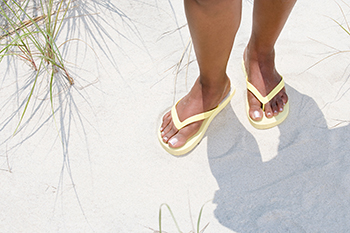 Many people take their feet for granted, despite the fact they are considered to be the foundation of the body. Frequently wearing flip flops may cause foot injury and pain, in addition to contributing to poor foot mechanics. The muscles in the foot may also be negatively affected, and this can lead to serious foot problems. Existing foot conditions like arch and heel pain, may worsen when flip flops are worn. If you would like more information about the harmful effects of wearing flip flops, please consult with a podiatrist.
Many people take their feet for granted, despite the fact they are considered to be the foundation of the body. Frequently wearing flip flops may cause foot injury and pain, in addition to contributing to poor foot mechanics. The muscles in the foot may also be negatively affected, and this can lead to serious foot problems. Existing foot conditions like arch and heel pain, may worsen when flip flops are worn. If you would like more information about the harmful effects of wearing flip flops, please consult with a podiatrist.
Flip-flops are not always the best choice of footwear. If you have any concerns about your feet or ankles, contact Dr. Kendall Blackwell from InStride Wilson Podiatry Associates. Our doctor will assist you with all of your foot and ankle needs.
Flip-Flops and Feet
When the weather starts warming up, people enjoy wearing flip-flops. Flip-flops are comfortable, stylish, and easy to slip on and off; they're perfect for any summer beach goer. However, these shoes can cause harm to the feet.
How Can Flip-Flops Affect Me Long-Term?
- Ankle problems
- Hip problems
- Lower back problems
- Pain in the balls of the feet
- Problems with foot arches
- Changes in the way you walk
Are There Injuries Associated with Flip-Flops?
Yes. Since flip-flops are relatively weak and do not provide the same amount of support as sneakers, people who wear flip-flops regularly are more susceptible to injuries. On top of that, the open nature of the shoe makes your feet more prone to other problems, such as cuts and even infections. Common injuries and ailments include:
- Sprained ankles
- Blisters
- Infections
- Cuts and Scrapes
I like Wearing Flip-Flops. Are There Safe Alternatives?
When buying flip-flops, try to find ones that have sturdy soles and that are made of high-quality materials that will support for your feet. These flip-flops will cost more but will also last longer as a result.
If you have any questions please feel free to contact our office located in Wilson, NC . We offer the newest diagnostic and treatment technologies for all your foot and ankle needs.
Did I Break My Ankle?
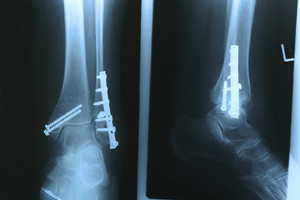 Broken ankles occur when any one of the bones in the ankle joint either fracture. The bones in the ankle joint include the tibia (shin bone), the fibula (back of the ankle), and the talus (the small bone between the heel bone and the tibia and fibula). Signs of a broken ankle include swelling, pain, bruising, tenderness, inability to bear weight, and an inability to walk on the affected leg. It can be difficult to tell the difference between a sprained ankle and a broken ankle. Sprains occur when the ligaments connecting the bone are torn. Patients who have injured their ankle and believe that it is sprained or fractured should consult with a podiatrist for a proper diagnosis. A podiatrist can use a variety of methods that include physical examination, an X-ray, or even a CT or MRI scan to determine the cause of your ankle pain.
Broken ankles occur when any one of the bones in the ankle joint either fracture. The bones in the ankle joint include the tibia (shin bone), the fibula (back of the ankle), and the talus (the small bone between the heel bone and the tibia and fibula). Signs of a broken ankle include swelling, pain, bruising, tenderness, inability to bear weight, and an inability to walk on the affected leg. It can be difficult to tell the difference between a sprained ankle and a broken ankle. Sprains occur when the ligaments connecting the bone are torn. Patients who have injured their ankle and believe that it is sprained or fractured should consult with a podiatrist for a proper diagnosis. A podiatrist can use a variety of methods that include physical examination, an X-ray, or even a CT or MRI scan to determine the cause of your ankle pain.
Broken ankles need immediate treatment. If you are seeking treatment, contact Dr. Kendall Blackwell from InStride Wilson Podiatry Associates. Our doctor can provide the care you need to keep you pain-free and on your feet.
Broken Ankles
A broken ankle is experienced when a person fractures their tibia or fibula in the lower leg and ankle area. Both of these bones are attached at the bottom of the leg and combine to form what we know to be our ankle.
When a physician is referring to a break of the ankle, he or she is usually referring to a break in the area where the tibia and fibula are joined to create our ankle joint. Ankles are more prone to fractures because the ankle is an area that suffers a lot of pressure and stress. There are some obvious signs when a person experiences a fractured ankle, and the following symptoms may be present.
Symptoms of a Fractured Ankle
- Excessive pain when the area is touched or when any pressure is placed on the ankle
- Swelling around the area
- Bruising of the area
- Area appears to be deformed
If you suspect an ankle fracture, it is recommended to seek treatment as soon as possible. The sooner you have your podiatrist diagnose the fracture, the quicker you’ll be on the way towards recovery.
If you have any questions, please feel free to contact our office located in Wilson, NC . We offer the newest diagnostic and treatment technologies for all your foot care needs.
Teaching Children How to Care for Their Feet
 It is important for parents to teach their children how to take care of their feet. Children are often fascinated to learn that each of their feet have twenty-six bones, in addition to several muscles, ligaments, and tendons. They understand their feet can feel good when they are washed and dried every day, and when they wear shoes that fit correctly. Babies' feet will get stronger when they can walk barefoot while indoors, due the toes gripping the floor to maintain balance. When the toenails are trimmed, ingrown toenails may be prevented. This is a condition that can cause severe pain and discomfort, and it can make it difficult for children to run and play. If you would like more information about methods on how to teach children the proper way to care for their feet, please consult with a podiatrist.
It is important for parents to teach their children how to take care of their feet. Children are often fascinated to learn that each of their feet have twenty-six bones, in addition to several muscles, ligaments, and tendons. They understand their feet can feel good when they are washed and dried every day, and when they wear shoes that fit correctly. Babies' feet will get stronger when they can walk barefoot while indoors, due the toes gripping the floor to maintain balance. When the toenails are trimmed, ingrown toenails may be prevented. This is a condition that can cause severe pain and discomfort, and it can make it difficult for children to run and play. If you would like more information about methods on how to teach children the proper way to care for their feet, please consult with a podiatrist.
The health of a child’s feet is vital to their overall well-being. If you have any questions regarding foot health, contact Dr. Kendall Blackwell of InStride Wilson Podiatry Associates. Our doctor can provide the care you need to keep you pain-free and on your feet.
Tips for Keeping Children's Feet Healthy
- Make sure their shoes fit properly
- Look for any signs of in-toeing or out-toeing
- Check to see if they have Clubfoot (condition that affects your child’s foot and ankle, twisting the heel and toes inward) which is one of the most common nonmajor birth defects.
- Lightly cover your baby’s feet (Tight covers may keep your baby from moving their feet freely, and could prevent normal development)
- Allow your toddler to go shoeless (Shoes can be restricting for a young child’s foot)
- Cut toenails straight across to avoid ingrown toenails
- Keep your child’s foot clean and dry
- Cover cuts and scrapes. Wash any scratches with soap and water and cover them with a bandage until they’ve healed.
If you have any questions, please feel free to contact our office located in Wilson, NC . We offer the newest diagnostic and treatment technologies for all your foot care needs.
What Are the Symptoms of an Ingrown Toenail?
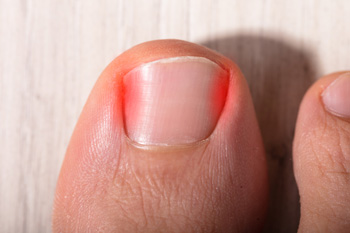 The big toe is most commonly affected when an ingrown toenail develops. An ingrown toenail is defined as the nail growing into the skin instead of over it. This can develop for several reasons including a recent toe injury, wearing shoes that do not fit properly, or from trimming the toenails incorrectly. A common symptom of this condition is pain in the big toe and surrounding areas, followed by redness and swelling. Mild relief may be found when the affected toe is soaked in warm water, and this can make it easier to gently pull the skin away from the toenail. It is also beneficial to wear shoes that have ample room for the toes to move freely in, in addition to refraining from putting pressure on the ingrown toenail. If you have symptoms of an ingrown toenail it is strongly suggested that you meet with a podiatrist who can effectively treat this condition.
The big toe is most commonly affected when an ingrown toenail develops. An ingrown toenail is defined as the nail growing into the skin instead of over it. This can develop for several reasons including a recent toe injury, wearing shoes that do not fit properly, or from trimming the toenails incorrectly. A common symptom of this condition is pain in the big toe and surrounding areas, followed by redness and swelling. Mild relief may be found when the affected toe is soaked in warm water, and this can make it easier to gently pull the skin away from the toenail. It is also beneficial to wear shoes that have ample room for the toes to move freely in, in addition to refraining from putting pressure on the ingrown toenail. If you have symptoms of an ingrown toenail it is strongly suggested that you meet with a podiatrist who can effectively treat this condition.
Ingrown toenails may initially present themselves as a minor discomfort, but they may progress into an infection in the skin without proper treatment. For more information about ingrown toenails, contact Dr. Kendall Blackwell of InStride Wilson Podiatry Associates. Our doctor can provide the care you need to keep you pain-free and on your feet.
Ingrown Toenails
Ingrown toenails are caused when the corner or side of a toenail grows into the soft flesh surrounding it. They often result in redness, swelling, pain, and in some cases, infection. This condition typically affects the big toe and may recur if it is not treated properly.
Causes
- Improper toenail trimming
- Genetics
- Improper shoe fitting
- Injury from pedicures or nail picking
- Abnormal gait
- Poor hygiene
You are more likely to develop an ingrown toenail if you are obese, have diabetes, arthritis, or have any fungal infection in your nails. Additionally, people who have foot or toe deformities are at a higher risk of developing an ingrown toenail.
Symptoms
Some symptoms of ingrown toenails are redness, swelling, and pain. In rare cases, there may be a yellowish drainage coming from the nail.
Treatment
Ignoring an ingrown toenail can have serious complications. Infections of the nail border can progress to a deeper soft-tissue infection, which can then turn into a bone infection. You should always speak with your podiatrist if you suspect you have an ingrown toenail, especially if you have diabetes or poor circulation.
If you have any questions, please feel free to contact our office located in Wilson, NC . We offer the newest diagnostic and treatment technologies for all your foot care needs.
Plantar Warts Can Be Treated!
More...
Sesamoid Bones and Injuries
The sesamoids are two small, pea-shaped bones found just under the base of the big toe. The sesamoids are embedded in a tendon, allowing you to move the big toes and acting as shock absorbers in the foot while you walk and run. Though these bones are quite small, they can be easily injured. The area around the sesamoid bones may become inflamed due to injury or overuse, leading to sesamoiditis. Over time, these bones may become unable to bear the load placed on them and could even develop tiny stress fractures. A sudden injury to the bones can cause them to fully fracture. If you have pain, swelling, or bruising in the ball of your foot, schedule an appointment with a podiatrist who can diagnose and treat various sesamoid injuries.
Sesamoiditis is an unpleasant foot condition characterized by pain in the balls of the feet. If you think you’re struggling with sesamoiditis, contact Dr. Kendall Blackwell of InStride Wilson Podiatry Associates. Our doctor will treat your condition thoroughly and effectively.
Sesamoiditis
Sesamoiditis is a condition of the foot that affects the ball of the foot. It is more common in younger people than it is in older people. It can also occur with people who have begun a new exercise program, since their bodies are adjusting to the new physical regimen. Pain may also be caused by the inflammation of tendons surrounding the bones. It is important to seek treatment in its early stages because if you ignore the pain, this condition can lead to more serious problems such as severe irritation and bone fractures.
Causes of Sesamoiditis
- Sudden increase in activity
- Increase in physically strenuous movement without a proper warm up or build up
- Foot structure: those who have smaller, bonier feet or those with a high arch may be more susceptible
Treatment for sesamoiditis is non-invasive and simple. Doctors may recommend a strict rest period where the patient forgoes most physical activity. This will help give the patient time to heal their feet through limited activity. For serious cases, it is best to speak with your doctor to determine a treatment option that will help your specific needs.
If you have any questions please feel free to contact our office located in Wilson, NC . We offer the newest diagnostic and treatment technologies for all your foot and ankle needs.
Uncomfortable Swollen Feet During Pregnancy
 One of the most common complaints pregnant women have is swollen feet, and they can generally begin to feel uncomfortable as the pregnancy progresses. This can happen as a result of the growing fetus which can put pressure on specific areas of the body, and it can occur from an increase in fluids and blood. Many women have found mild relief when they can frequently elevate their feet, and it may help to perform gentle foot stretches throughout the day. Additionally, it is beneficial to limit sodium intake, and wearing compression stockings may help with persistent swelling. If you are pregnant, and would like more information about why your feet are swollen and additional relief methods, please consult with a podiatrist.
One of the most common complaints pregnant women have is swollen feet, and they can generally begin to feel uncomfortable as the pregnancy progresses. This can happen as a result of the growing fetus which can put pressure on specific areas of the body, and it can occur from an increase in fluids and blood. Many women have found mild relief when they can frequently elevate their feet, and it may help to perform gentle foot stretches throughout the day. Additionally, it is beneficial to limit sodium intake, and wearing compression stockings may help with persistent swelling. If you are pregnant, and would like more information about why your feet are swollen and additional relief methods, please consult with a podiatrist.
Pregnant women with swollen feet can be treated with a variety of different methods that are readily available. For more information about other cures for swollen feet during pregnancy, consult with Dr. Kendall Blackwell from InStride Wilson Podiatry Associates. Our doctor will attend to all of your foot and ankle needs.
What Foot Problems Can Arise During Pregnancy?
One problem that can occur is overpronation, which occurs when the arch of the foot flattens and tends to roll inward. This can cause pain and discomfort in your heels while you’re walking or even just standing up, trying to support your baby.
Another problem is edema, or swelling in the extremities. This often affects the feet during pregnancy but tends to occur in the later stages.
How Can I Keep My Feet Healthy During Pregnancy?
- Wearing orthotics can provide extra support for the feet and help distribute weight evenly
- Minimize the amount of time spent walking barefoot
- Wear shoes with good arch support
- Wear shoes that allow for good circulation to the feet
- Elevate feet if you experience swelling
- Massage your feet
- Get regular, light exercise, such as walking, to promote blood circulation to the feet
If you have any questions please feel free to contact our office located in Wilson, NC . We offer the newest diagnostic and treatment technologies for all your foot and ankle needs.
Several Types of Foot Pain
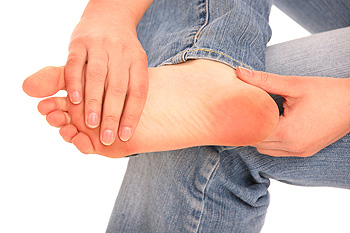 There are several different types of foot pain that exist. An ankle impingement can occur as a result of repetitive movement or from a sudden injury. This condition may have the same symptoms of an ankle sprain, and it may cause difficulty in walking. Children may experience heel pain, which may be indicative of Sever’s disease. This is an ailment that affects the growth plate in the heel, and the pain may be severe when pressure is put on the heel. A common form of foot pain is known as plantar fasciitis, and this occurs when the plantar fascia becomes inflamed. The plantar fascia is a band of tissue that is found on the bottom of the foot, and it connects the heel to the toes. This condition can happen from wearing shoes that do not fit correctly, or from standing on hard surfaces for the majority of the day. If you have any type of foot pain, it is strongly suggested that you are under the care of a podiatrist who can diagnose and treat foot disorders.
There are several different types of foot pain that exist. An ankle impingement can occur as a result of repetitive movement or from a sudden injury. This condition may have the same symptoms of an ankle sprain, and it may cause difficulty in walking. Children may experience heel pain, which may be indicative of Sever’s disease. This is an ailment that affects the growth plate in the heel, and the pain may be severe when pressure is put on the heel. A common form of foot pain is known as plantar fasciitis, and this occurs when the plantar fascia becomes inflamed. The plantar fascia is a band of tissue that is found on the bottom of the foot, and it connects the heel to the toes. This condition can happen from wearing shoes that do not fit correctly, or from standing on hard surfaces for the majority of the day. If you have any type of foot pain, it is strongly suggested that you are under the care of a podiatrist who can diagnose and treat foot disorders.
Foot Pain
Foot pain can be extremely painful and debilitating. If you have a foot pain, consult with Dr. Kendall Blackwell from InStride Wilson Podiatry Associates. Our doctor will assess your condition and provide you with quality foot and ankle treatment.
Causes
Foot pain is a very broad condition that could be caused by one or more ailments. The most common include:
- Bunions
- Hammertoes
- Plantar Fasciitis
- Bone Spurs
- Corns
- Tarsal Tunnel Syndrome
- Ingrown Toenails
- Arthritis (such as Gout, Rheumatoid, and Osteoarthritis)
- Flat Feet
- Injury (from stress fractures, broken toe, foot, ankle, Achilles tendon ruptures, and sprains)
- And more
Diagnosis
To figure out the cause of foot pain, podiatrists utilize several different methods. This can range from simple visual inspections and sensation tests to X-rays and MRI scans. Prior medical history, family medical history, and any recent physical traumatic events will all be taken into consideration for a proper diagnosis.
Treatment
Treatment depends upon the cause of the foot pain. Whether it is resting, staying off the foot, or having surgery; podiatrists have a number of treatment options available for foot pain.
If you have any questions, please feel free to contact our office located in Wilson, NC . We offer the newest diagnostic and treatment technologies for all your foot care needs.

